In 2010, alongside SEGA’s landmark rhythm game Hatsune Miku: Project DIVA 2nd, a now-legendary limited item arrived: the PSP-3000 Hatsune Miku Project DIVA 2nd Accessory Set.
Finished in a special design that lets you customize your PSP in full Miku style, preorders sold out almost instantly at the time. From the pouch to the deco stickers and cleaning cloth, every piece recreated “Miku’s world,” making this a must-have set for fans.
Even today, this collaboration—an icon of its era—is highly regarded among collectors. Wouldn’t you like to feel the “PSP years spent with Miku” in your hands once again?
- PSP-3000 Hatsune Miku Project DIVA 2nd Accessory Set
- Background and Development
- How to Play Hatsune Miku: Project DIVA (Basics & Appeal)
- What Is Project DIVA?
- 1. How the series began
- 2. Characters
- 3.Core features and appeal
- 4. Cultural significance
- 5. Evolution of the games
- Hatsune Miku: Project DIVA (PSP)
- Hatsune Miku: Project DIVA 2nd (PSP)
- Hatsune Miku: Project DIVA extend (PSP)
- Hatsune Miku: Project DIVA Arcade (Arcade)
- Hatsune Miku: Project DIVA f (PS Vita)
- Hatsune Miku: Project DIVA F (PS3)
- Hatsune Miku: Project DIVA F 2nd (PS Vita/PS3)
- Hatsune Miku: Project DIVA X (PS Vita/PS4)
- Hatsune Miku: Project DIVA Future Tone (PS4)
- Hatsune Miku: Project DIVA Mega39’s (Nintendo Switch)
- Summary
PSP-3000 Hatsune Miku Project DIVA 2nd Accessory Set
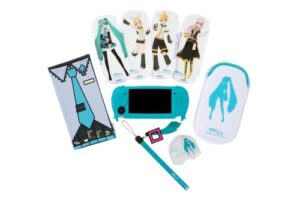
Source:Amazon
Product Details
On July 29, 2010, SEGA released the PSP game Hatsune Miku: Project DIVA 2nd.
To commemorate that launch, the PSP-3000 Hatsune Miku Project DIVA 2nd Accessory Set was introduced.
1) Face Cover (PSP-3000-only, hard type)
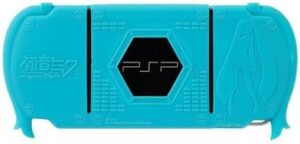
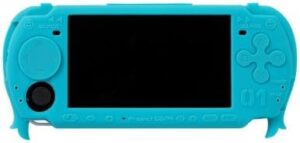
Source:Amazon
-
Purpose: Protects the front panel from scratches and scuffs; usable while attached.
-
Design: Turquoise tone inspired by Miku.
2) Carrying Pouch (Miku silhouette / logo)
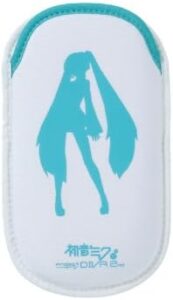
Source:Amazon
-
Purpose: Protects the console in transit; typically a soft pouch with cushioning inside.
-
Design: White base with a Miku silhouette—signature collaboration styling.
3) LCD Protection Film (PSP-3000 size)
-
Purpose: Guards the screen against scratches and fingerprints.
-
Application tips: Dry application recommended. Degrease with the cloth → remove dust → apply slowly from one edge; push bubbles outward with a card.
4) Decoration Stickers / Character Stickers
-
Purpose: Turn your PSP exterior into a Miku-themed custom; bring the “module” world to your handheld.
-
Contents: Usually includes a large body skin plus small character stickers (Miku / Rin / Len / Luka, etc.).
5) Ring Strap (Miku color)
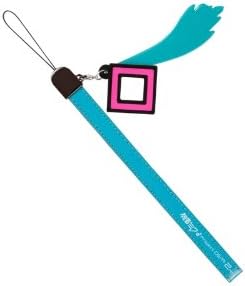
Source:Amazon
- Purpose: Anti-drop and better carry; ideal together with the pouch for on-the-go use.
6) UMD Slim Case
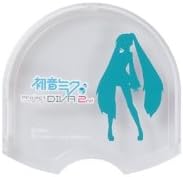
Source:Amazon
-
Purpose: Protects a single UMD when carried alone.
-
Design: Often printed with a Miku silhouette or logo.
7) Cleaning Cloth (tie motif / microfiber)
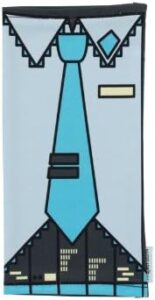
Source:Amazon
- Purpose: Wipes fingerprints and skin oils from the LCD and exterior.
Background and Development
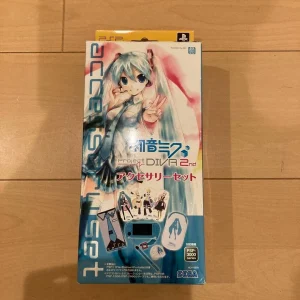
1. Growing popularity of the Hatsune Miku: Project DIVA series
Released for PSP in 2009, the first Hatsune Miku: Project DIVA became a breakout hit as a Miku-centered rhythm game.
Vocaloid culture quickly expanded at home and abroad—beyond gamers to music, illustration, and doujin circles.
Riding that momentum, the direct sequel Project DIVA 2nd arrived in 2010.
2. Natural affinity between PSP and Miku
At the time, the PSP was a popular “take-it-with-you” multimedia device among younger users—perfect for the idea of “going out with Miku.”
Demand surged for officially licensed accessories to “dress” the PSP in Miku style, leading to this product’s development.
3. Official SEGA × Crypton collaboration
Brought to life by game publisher SEGA and character rights holder Crypton Future Media.
The concept: extend the game’s world into your everyday belongings—hence the practical lineup of pouch, cover, stickers, and more.
4. Designed specifically for PSP-3000
As PSP models shifted from 1000/2000 to the improved, lighter 3000 series, accessories were tailored to the 3000’s dimensions and screen.
The 3000-specific sizes for the film and covers reflect this generational change.
5. Positioned as a daily-use fan item
This was more than a game peripheral—it was conceived as an item Miku fans would want to carry every day.
From the tie motif to silhouettes, the design language put “Miku-ness” front and center, with strong emphasis on collectability as well.
How to Play Hatsune Miku: Project DIVA (Basics & Appeal)
1. Simple “press on the beat” gameplay
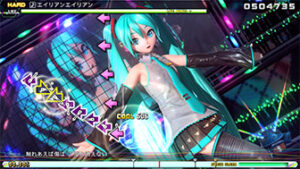
Source:SEGA
Project DIVA is a rhythm game: when the flying icon overlaps the on-screen target, press the matching button (○ × △ □) on the beat.
Judgment ranks include:
-
Perfect
-
Great
-
Good
-
Safe
-
Sad / Worst
These affect your score based on timing accuracy. The blend of tempo and visuals creates the feeling of performing a live show—the series’ greatest draw.
2. Enjoy live-style visuals and MV-like direction for each track
Project DIVA isn’t just about notes—it’s also about live performances by Miku and friends rendered in 3D, which you play along with.
-
Full 3D stage direction tailored to each song
-
MV-like camera work and lighting
-
Backgrounds, outfits, and character acting that fully realize the music’s world
You’re both playing a game and watching a music film—a key difference from other rhythm titles.
3. Four difficulty levels—from beginner to expert
Every track offers Easy / Normal / Hard / Extreme so you can grow at your pace.
-
Easy: learn the feel of hitting on the beat
-
Normal: balance vocals and beat
-
Hard / Extreme: adds holds, simultaneous presses, and denser patterns
Experts memorize patterns and rapid-fire rhythms to push high scores.
4. Customize with “modules” (outfits)
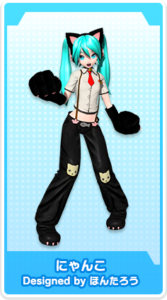
Source:SEGA
Swap character outfits (modules) for Miku and the rest of the cast to stage the same song with a fresh look and vibe.
-
Besides Miku: Rin, Len, Luka, KAITO, MEIKO appear
-
Many original outfits, plus fan-designed modules matched to songs
-
New modules unlock by meeting conditions
Fans love chasing personal bests with their favorite song × outfit × difficulty combos.
5. PV Mode for watching the performance only
A dedicated “PV Mode” lets you watch the visuals without playing—like a private Vocaloid live.
High-quality 3D models, facial nuance, and evolving direction make simple viewing a pleasure in its own right.
6. Depth and replay value
Beyond score attacking, there’s outfit collecting, title achievements, and high-score chasing.
-
Clear ranks and personal records per song
-
The fun of completing collections
-
In-game currency (DIVA Points) to purchase outfits
Plenty of goals mean long-term engagement.
What Is Project DIVA?
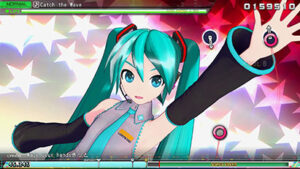
Source:SEGA
1. How the series began
-
First title: Hatsune Miku: Project DIVA (2009, PSP)
-
Developer/Publisher: SEGA
-
Core gameplay: press buttons to Vocaloid music with precise timing.
-
Popular from the start for letting players collect modules (outfits) and accessories, customizing the cast’s look freely.
2. Characters
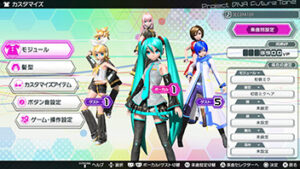
Source:SEGA
-
Lead: Hatsune Miku
-
Also features Crypton characters: Kagamine Rin/Len, Megurine Luka, KAITO, MEIKO
-
Mix your favorite character with your favorite songs and outfits.
3.Core features and appeal
-
All tracks are by Vocaloid producers—including famous songs like “Senbonzakura,” “Melt,” and “World Is Mine.”
-
Combines rhythm-game satisfaction with deep character customization.
-
In the PSP era, limited edition consoles and accessory sets launched alongside the games, reinforcing the line as premium fan items.
4. Cultural significance
-
More than a game: a catalyst that spread Vocaloid culture worldwide.
-
Playing the game doubled as experiencing the Vocaloid music scene, serving as an entry point for Miku and rhythm-game fans.
5. Evolution of the games
Hatsune Miku: Project DIVA (PSP)
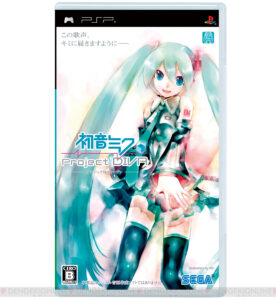
Source:Amazon
-
Release: July 2, 2009
-
Notes: The first entry on PSP, 30+ songs including “Koisuru VOC@LOID,” “Miku Miku ni Shite Ageru♪”
Hatsune Miku: Project DIVA 2nd (PSP)
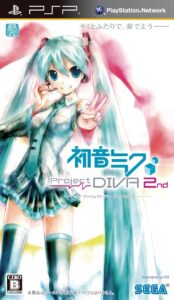
Source:Amazon
-
Release: July 29, 2010
-
Notes: Direct sequel adding duets and module switching; includes fan favorites like “magnet” and “Romeo and Cinderella.”
Hatsune Miku: Project DIVA extend (PSP)

Source:Amazon
-
Release: November 10, 2011
-
Notes: Expansion of 2nd with new and remade tracks; includes “Paradichlorobenzene,” “Kocchi Muite Baby.” Final new title on PSP.
Hatsune Miku: Project DIVA Arcade (Arcade)
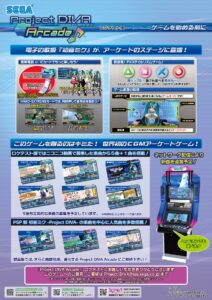
Source:Hatsune Miku Official Blog
-
Operation start: 2010
-
Notes: Large display and dedicated buttons; higher visual fidelity and a true live feel.
Hatsune Miku: Project DIVA f (PS Vita)
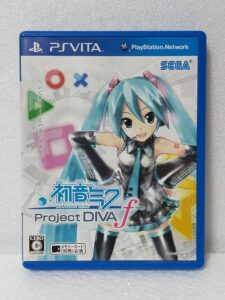
Source:Amazon
-
Release: August 30, 2012
-
Notes: Handheld moved from PSP to Vita; major leap in 3D quality; adds touch controls. Features “Tell Your World,” among others.
Hatsune Miku: Project DIVA F (PS3)
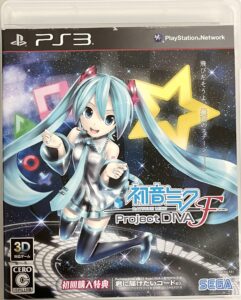
Source:Amazon
-
Release: March 7, 2013
-
Notes: HD port of f for PS3; enjoy on the big screen.
Hatsune Miku: Project DIVA F 2nd (PS Vita/PS3)
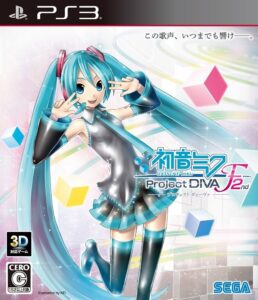
Source:Amazon
-
Release: March 27, 2014
-
Notes: Remade tracks from 2nd plus many new songs; includes “Two Breaths Walking,” “Melancholic.”
Hatsune Miku: Project DIVA X (PS Vita/PS4)

Source:Amazon
-
Release: March 24, 2016 (Vita); August 25, 2016 (PS4)
-
Notes: First to introduce a story-driven structure; songs grouped by thematic “auras.”
Hatsune Miku: Project DIVA Future Tone (PS4)
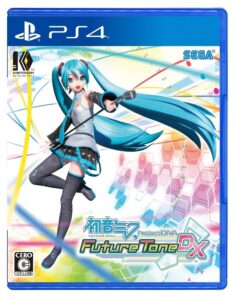
Source:Amazon
-
Release: June 23, 2016
-
Notes: Based on the arcade version; features 200+ songs.
Hatsune Miku: Project DIVA Mega39’s (Nintendo Switch)
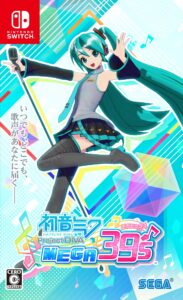
Source:Amazon
-
Release: February 13, 2020
-
Notes: Built for Switch; includes a Joy-Con action rhythm mode; adds newer Vocaloid hits like “BRING IT ON” and “Hibana.”
Summary
The PSP-3000 Hatsune Miku Project DIVA 2nd Accessory Set is more than a game peripheral—it’s a monument to the bond between fans and Miku.
Limited-edition design, a truly usable lineup, and the joy of “turning your PSP into a Miku machine”—together these offered fans a uniquely special experience.
Today, the set transcends nostalgia: it’s a collector’s treasure that lets you hold that era’s excitement once again.
▼ HD Toys Store ▼
PSP-3000 Hatsune Miku Project DIVA 2nd Accessory Set for SEGA Limited Edition


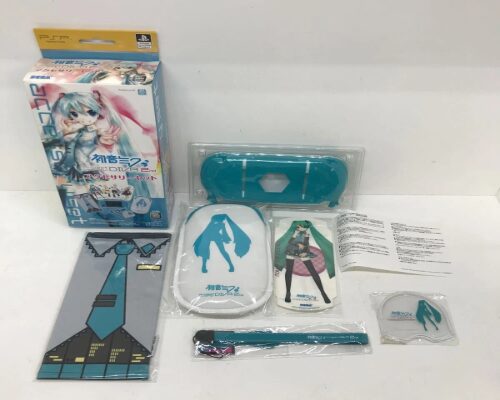


コメント